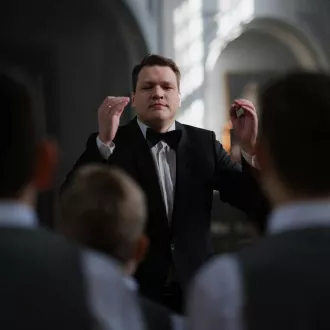Transcription Author's rights
Copyright ownership is when a single owner or owners have the right to use some kind of original creative work, which can include books, videos, songs, artwork, recipes, or movies. This means that no one else, apart from the creator, can use, change, distribute or sell their material unless they have permission from the creator.
License and copyright assignment
License: In order for someone other than the creator to obtain the right to use a creative work, you must take out a license, which functions as a temporary legal permission to use the material. When you take out a license, it does not mean that you become the owner, only that you have the right to use it at specific times.
An example of this would be Zumba trainers, who purchase an initial license for a few hundred dollars. To later continue paying monthly, to have the permission to teach Zumba lessons in particular formats related to this style of fitness.
Assignment: When you buy the copyright to a work so that you can use it whenever and however you want, it is called, in legal terms, a copyright assignment. This transaction gives the buyer all the rights as if you were the initial owner of the rights.
There are different types of assignments for different types of copyrights. In most cases, the person who authored the creative work is by default the owner of the copyright. What it is in some instances, when the content created is seen to be of increased value, is the one who contracts, and not the original creator, who owns the copyright.
Example
Copyright laws are very complex and sometimes difficult to understand. A curious example of how these laws work is evidenced in the history of the well-known Gatorade drink, which is heavily promoted to high-performance athletes.
The drink was invented by researchers at the University of Florida in 1965. According to their own later accounts, when they created the drink, they approached the University's directors to reach some agreement on the copyright of the drink.
Initially, Dr. Robert Cade, the leader of the research team, tried to arrange with the University to get $10,000 to try to sell the beverage formula to a national distributor.
According to Cade himself, at that time the University officials told him that they had no interest in the rights to the beverage. So Cade and his team of researchers worked out a deal for themselves with a beverage distributor and manufacturer named Stokely Van Camp in 1967.
At that time the deal made for the rights to Gatorade was for an initial payment of $25,000, plus a $5,000 bonus followed by a 5% royalty on every gallon of the beverage sold, for life.
When the University learned of this deal and that the team had reached an agreement with a national distributor, and that they had been left out, the problems began. University officials claimed that the drink was invented on their premises, so according to them the copyright of the formula actually belonged to them.
For this reason, the creators of Gatorade and the University of Florida were involved in a legal battle in the following years. Among the factors taken into account in the litigation was that Dr. Cade, although a University employee, used government funding to create the drink. In addition to this, no one on the team signed any documents stating that their creations would be owned by the University.
This type of conflict is much less prevalent today, as most universities specify their rights when hiring a new employee, and it is determined from the start that they have ownership over everything that is created while working for them.
After years of legal battle between the University and the research team, a settlement was reached in 1972. Dr. Cade and his team would continue to receive royalties for every gallon of Gatorade sold, but 20% of these would go to the University.
At the time of the deal, it meant that the school would get 1 cent for every gallon of the drink sold, while the team would get the remaining 4 cents. In the year the deal was struck, the University of Florida accumulated $115,000 in royalties from the sales of the beverage, w
copyright




